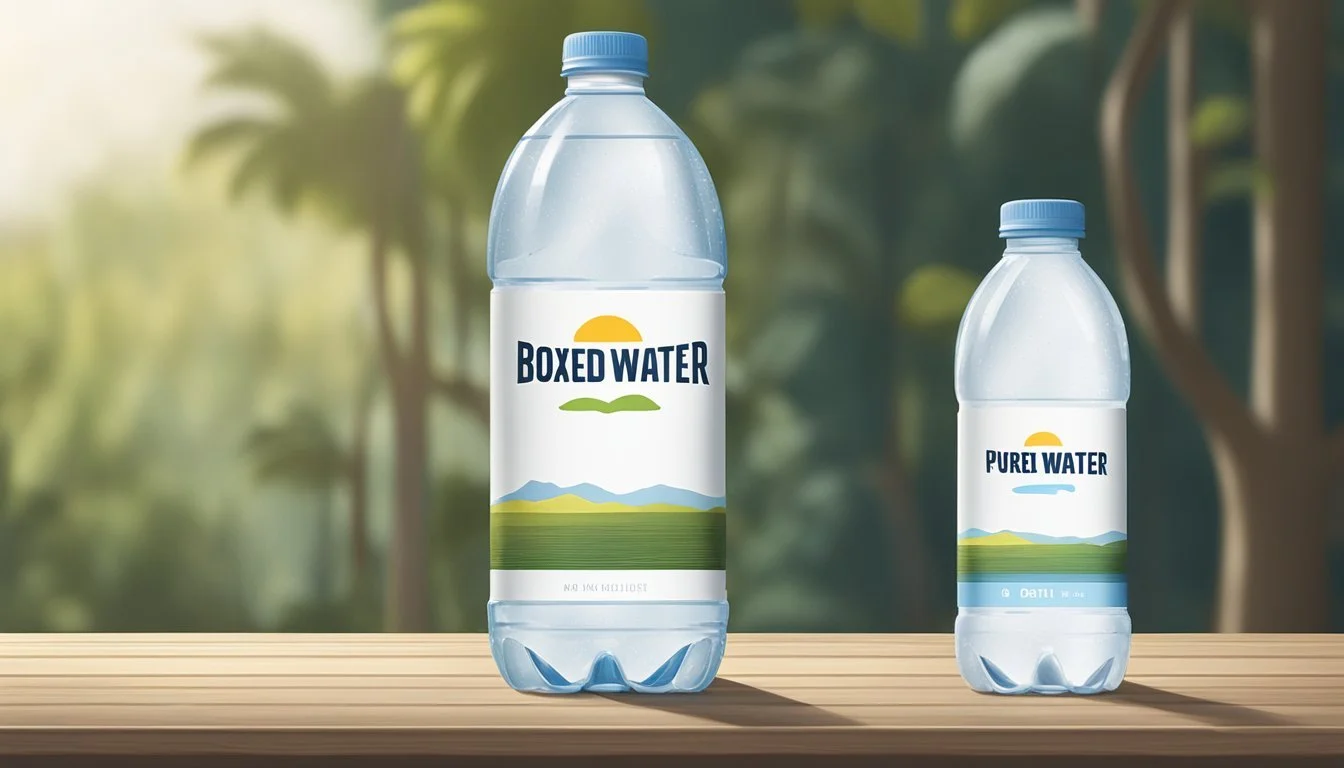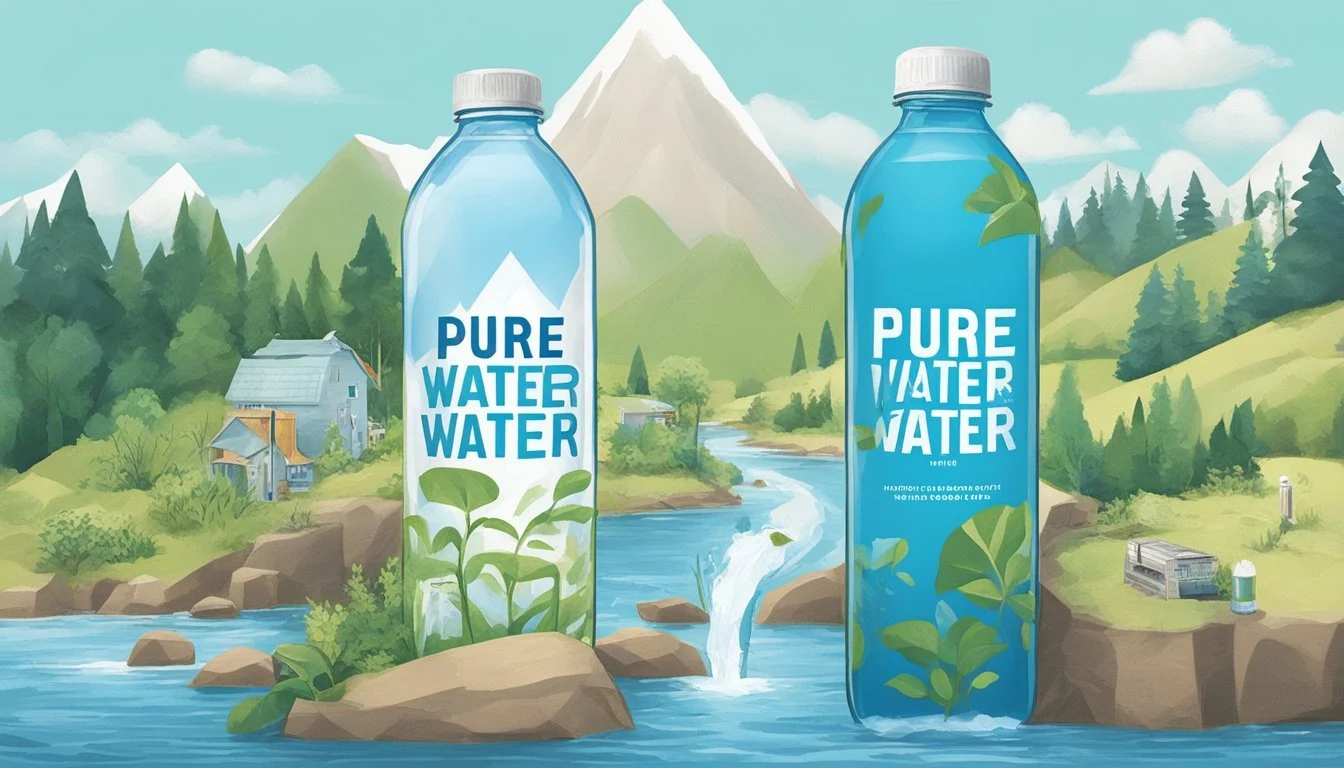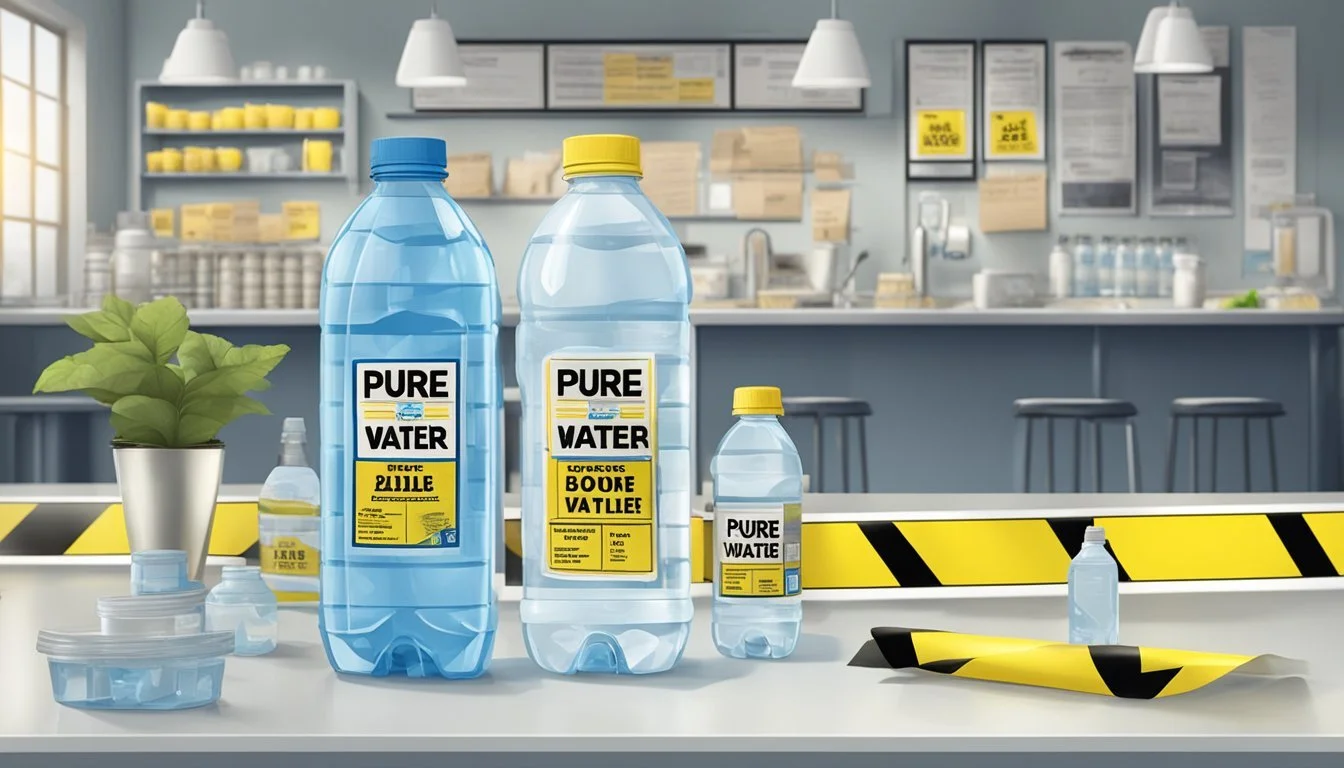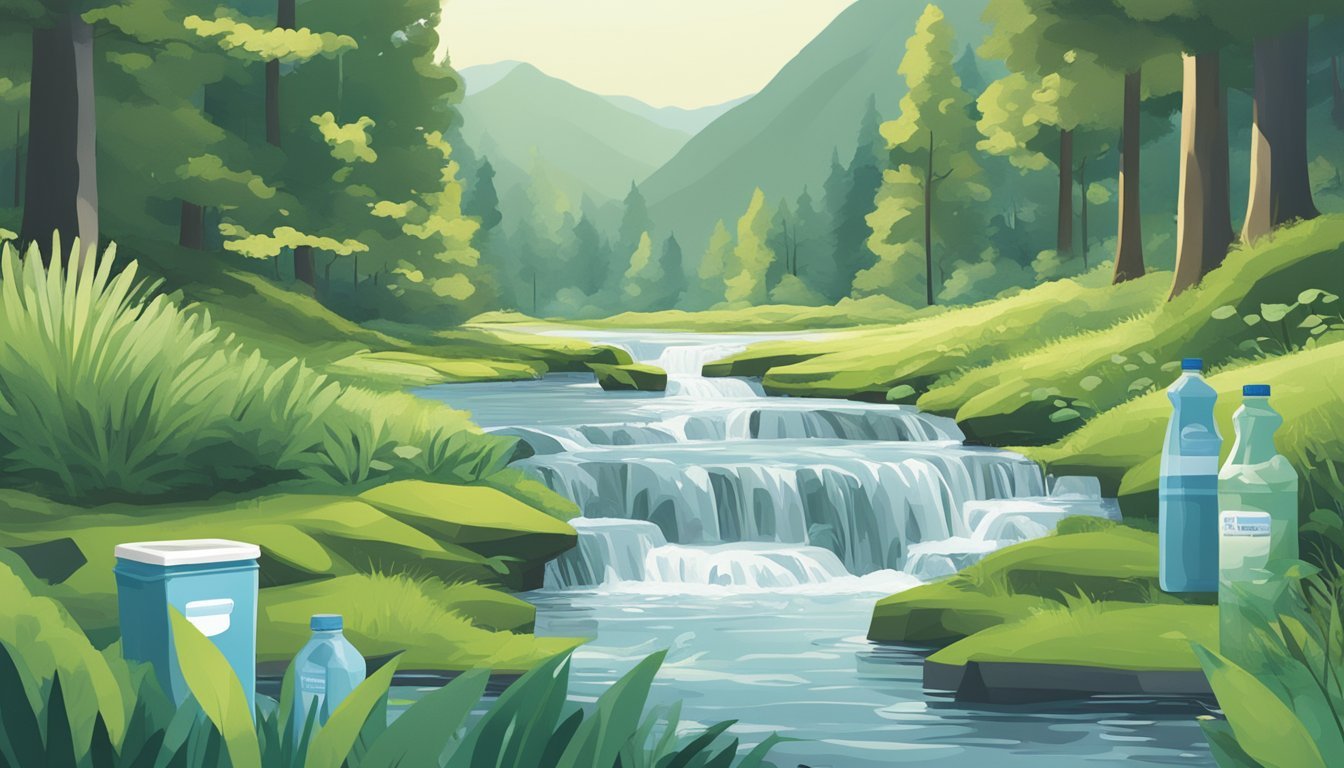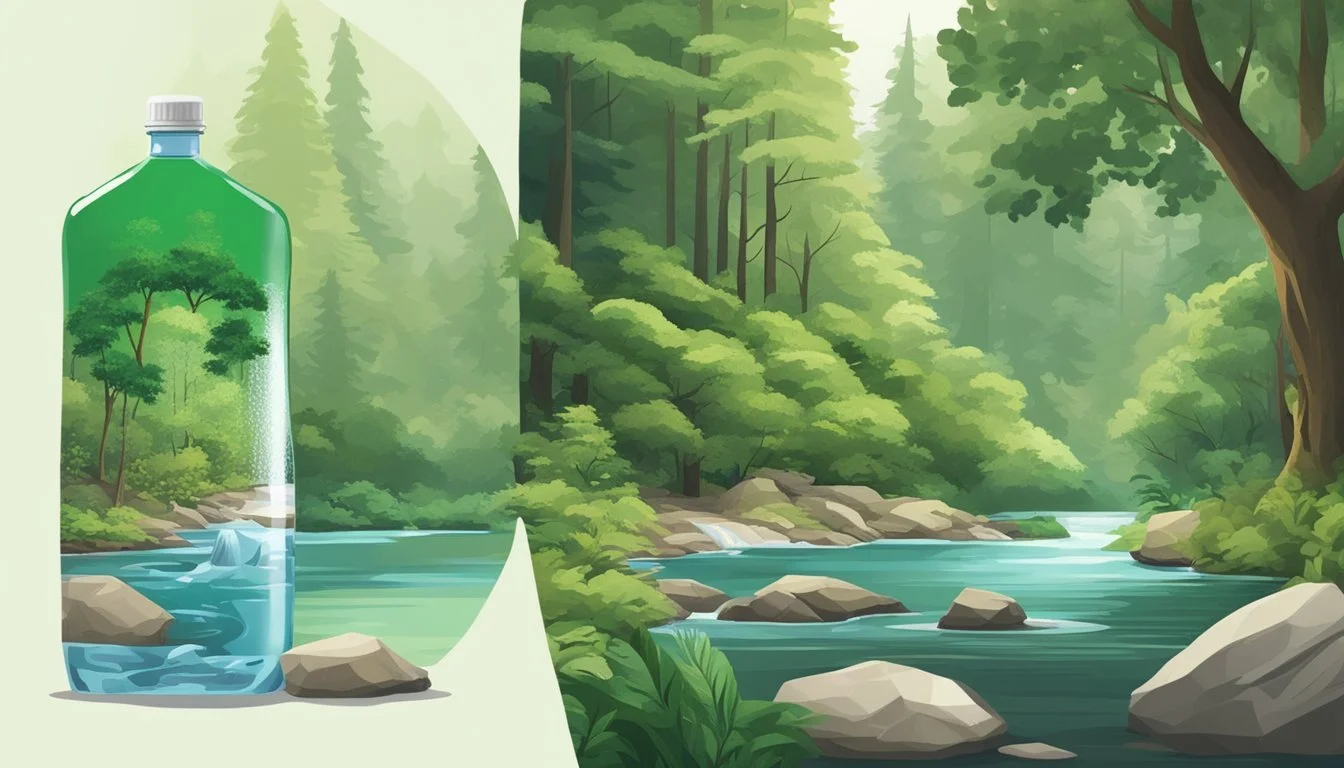Boxed Water vs. Pure Life
Comparing Bottled Water Options
Choosing the right bottled water often leads consumers to compare popular brands like Boxed Water and Pure Life. Boxed Water is known for its eco-friendly packaging made from recyclable paper cartons mixed with plant-based plastics. This appeals to environmentally-conscious consumers who seek sustainable drinking water options.
On the other hand, Pure Life offers widespread availability and affordability. It's a go-to choice for many households due to its consistent quality and easy accessibility. While it may not boast the eco-friendly credentials of Boxed Water, it remains a reliable and convenient option for bottled water.
When it comes down to the best choice, Boxed Water stands out for its commitment to sustainability, whereas Pure Life excels in availability and cost-effectiveness. Understanding these differences can help consumers make informed decisions based on their values and needs.
Overview of Boxed and Bottled Water
Boxed and bottled water have become essential products for consumers seeking convenience and hydration. The former offers an eco-friendly option, while the latter continues to dominate the market due to its widespread availability and brand variety.
Origin and Growth of Boxed Water Brands
Boxed Water was first introduced in 2009 with the launch of Boxed Water Is Better. This innovative concept aimed to reduce the environmental impact associated with traditional plastic bottles by using primarily paper cartons. The box is made up of 76% paper, 24% plastic, and 1% aluminum to ensure its durability and safety.
Another significant player is Just Water, launched in 2015 by Jaden Smith. Just Water emphasizes sustainability through its use of renewable resources and a recyclable carton made from 82% renewable content. The rise of these brands reflects a growing consumer demand for environmentally conscious products.
Market Presence of Bottled Water Brands
Bottled water brands have established a strong market presence over the years, with significant names like Nestlé Pure Life, Dasani, Aquafina, and Poland Spring. Nestlé Pure Life is known for its widespread availability and affordability, ensuring it remains a staple in households worldwide. Dasani, produced by Coca-Cola, offers a range of hydration options, including flavored varieties.
Aquafina, owned by PepsiCo, competes closely with Dasani by offering purified water that undergoes a rigorous seven-step filtration process. Poland Spring is another major brand, sourcing its water from natural springs in Maine. This broad range of options ensures that bottled water remains a popular choice among consumers, despite growing environmental concerns.
Packaging Innovations and Environmental Impact
The packaging of bottled water significantly influences its environmental footprint. Boxed Water and Nestlé Pure Life adopt different approaches to packaging, each with distinct impacts on pollution and sustainability.
Paper Cartons vs. Plastic Bottles
Boxed Water utilizes paper cartons composed of 75% paper, 20% plastic, and 5% aluminum. This blend aims to reduce reliance on plastics, using renewable resources instead. The paper used is primarily from sustainably managed forests.
Nestlé Pure Life, on the other hand, relies heavily on plastic bottles made from polyethylene terephthalate (PET). These bottles contribute significantly to global plastic pollution. The production process requires substantial amounts of oil, adding to environmental degradation. While PET is recyclable, it is often not recycled effectively, exacerbating waste issues.
Carton packaging by Boxed Water demonstrates a clear move towards more sustainable materials. This innovative approach helps reduce the dependence on single-use plastics and leverages renewable resources.
Recycling and Waste Management
Recycling plays a crucial role in determining the environmental impact of both Boxed Water and Nestlé Pure Life. Boxed Water cartons, though using less plastic, face challenges in recycling because of their layered composition of paper, plastic, and aluminum. Specialized facilities are needed to separate these materials effectively.
Nestlé Pure Life's plastic bottles, made of PET, are theoretically easier to recycle since PET recycling infrastructure is more widespread. However, the actual recycling rates remain low, leading to significant plastic waste in landfills and oceans.
Both brands strive for waste reduction, but their effectiveness varies. Boxed Water's cartons, despite their sustainability benefits, could create more waste if not recycled properly. Nestlé Pure Life faces criticism for contributing to plastic pollution, despite the recyclability of its bottles.
Health and Safety Considerations
When comparing Boxed Water and Pure Life, it is critical to evaluate the quality, purity, and regulatory compliance of these products to ensure consumer safety.
Quality and Purity of Water
Quality reports from both companies highlight that water purity is a top priority. Boxed Water uses a combination of ultraviolet light, carbon filtration, and reverse osmosis to eliminate impurities. This process ensures that contaminants such as heavy metals like arsenic and lead are removed from the water, providing a safer drinking experience.
Pure Life also emphasizes water quality by sourcing from multiple wells and springs, which are then treated for contaminants. The treatment process includes a multi-step filtration that removes potential hazards. Quality control measures ensure the final product meets safety standards.
Regulations and Consumer Safety
Boxed Water and Pure Life adhere to stringent regulatory standards to guarantee safety. Boxed Water aligns with the International Bottled Water Association (IBWA) guidelines, ensuring that its product meets high safety and quality benchmarks. Regular testing is conducted to maintain compliance and customer trust.
Pure Life follows the same strict regulations, frequently testing water at various stages of production. Regulatory bodies ensure that contaminants like arsenic and lead are kept within safe limits. The packaging materials for both brands are designed to preserve water quality and safety for consumers without compromising environmental sustainability.
Sustainability and Resource Management
Boxed Water and Pure Life both approach sustainability and resource management in different ways. Their strategies focus on materials used, overall environmental impact, and reduction of carbon footprints.
Sustainable Practices in Water Brands
Boxed Water utilizes cartons made from 74% paper, 1% aluminum, and 25% plastic. The plastic film ensures the packaging is waterproof and properly sealed. This mixture combines renewable paper sources and minimal aluminum for structural integrity.
Pure Life primarily uses plastic bottles. Despite efforts to make these bottles from recyclable materials, they still contribute significantly to plastic pollution. Boxed Water’s choice of paper-based packaging reduces this environmental burden by lessening the dependency on plastics and enhancing recyclability.
Renewable Resources and Carbon Footprint
Boxed Water boasts a 36% lower carbon footprint compared to traditional plastic bottles. This reduction is partly due to their use of renewable resources like sustainably-sourced paper. Additionally, Boxed Water cartons use 43% less fossil fuel and have a 95% lower impact on the ozone layer.
Pure Life's plastic bottles, while recyclable, still have a higher overall environmental footprint. The manufacturing and disposal processes contribute to greater CO2 emissions. Boxed Water's method aligns better with sustainability goals by emphasizing renewable materials and reducing fossil fuel consumption. This effort not only conserves resources but also minimizes their ecological footprint.
Consumer Experience and Convenience
Understanding the consumer experience with bottled water involves looking at the ease of use, portability, and the variety of flavors available. These factors can determine which brand aligns better with consumer needs.
Ease of Use and Portability
Boxed Water uses a carton packaging primarily made of paper, which is lightweight and easy to carry. This makes it convenient for consumers who prioritize portability and environmentally friendly materials. Carton packaging fits well in bags and backpacks, offering ease for those on the move.
Nestlé Pure Life, packaged in recyclable plastic bottles, offers durability and convenience. Plastic bottles are less likely to be damaged, providing a sense of security for consumers. They also often come with resealable caps, making them convenient for multiple uses throughout the day.
Flavors and Innovations in Bottled Water
Boxed Water focuses on sustainability but also innovates with options like flavored water. They offer flavors such as grapefruit and lemon, providing a refreshing alternative for those who prefer a bit of zest in their hydration routine. This variety appeals to consumers seeking both taste and eco-conscious choices.
Nestlé Pure Life also explores various flavors besides classic options. They offer flavored and alkaline water, catering to different taste preferences and health-conscious consumers. These innovations help meet the diverse demands of the market, from flavored water enthusiasts to those seeking balanced pH levels for health benefits.
Economic and Ethical Aspects
Economic and ethical considerations surrounding Boxed Water and Nestlé Pure Life influence consumer choices in significant ways. Factors include cost-effectiveness, perceived value, corporate responsibility, and potential greenwashing.
Cost-Effectiveness and Value
Consumers often look at price and value when deciding between Boxed Water and Nestlé Pure Life. Nestlé Pure Life usually retails at a lower price point than Boxed Water, making it a more economical choice for budget-conscious individuals.
Boxed Water's pricing is higher due to the materials and processes involved in creating a more sustainable product. Consumers may find value in Boxed Water's eco-friendly packaging, made predominantly from paper and plant-based plastics. In contrast, Nestlé Pure Life is typically packaged in PET containers, which are less expensive but have a higher environmental impact.
Bold and italic formats might be used to further emphasize these differences.
Ethical Branding and Greenwashing
Both Boxed Water and Nestlé Pure Life claim sustainability, but their approaches differ significantly. Boxed Water markets itself as a greener alternative, with packaging made from 74% paper and an ethos centered on reducing plastic waste. Consumers might view Boxed Water as ethically superior due to these sustainable practices.
Conversely, Nestlé Pure Life faces criticism for potential greenwashing. Although it participates in recycling programs and pledges environmental responsibility, there are accusations of corporate malfeasance, such as over-extraction of water resources. This raises questions about the brand's ethical integrity.
While Boxed Water's branding aligns closely with eco-conscious values, Nestlé's efforts sometimes appear as attempts to mitigate criticism rather than substantive changes. For consumers prioritizing ethics, this disparity can be a deciding factor in their purchasing decisions.
Comparative Analysis
This analysis focuses on the environmental impacts, packaging materials, and health considerations of Boxed Water is Better and Nestlé Pure Life. Each product's sustainability and influence on public health are key aspects of this comparison.
Boxed Water is Better vs. Nestlé Pure Life
Boxed Water is Better uses cartons made from 74% paper, 25% plastic, and 1% aluminum. This mix aims to minimize plastic use and enhance recyclability. The cartons are marketed as more sustainable than traditional plastic bottles.
Nestlé Pure Life bottles are predominantly plastic, contributing significantly to global plastic pollution. Despite efforts to make the bottles recyclable, the production involves substantial oil consumption and environmental strain.
Comparison Summary:
Boxed Water is Better: 74% paper, aimed at reducing plastic use.
Nestlé Pure Life: Primarily plastic, higher environmental impact.
Environmental and Health Implications
Environmental Impact: Boxed Water's packaging reduces the reliance on plastic, aiming for higher sustainability. Cartons, combining paper, plastic, and aluminum, still face challenges in recyclability but offer a better alternative to full-plastic designs.
For Nestlé Pure Life, plastic bottles are a major environmental concern. The production process uses considerable oil and the potential for plastic waste to pollute ecosystems is significant.
Health Considerations: Boxed Water employs multiple purification methods, including ultraviolet light, carbon filtration, and reverse osmosis. These techniques ensure that the water is free from impurities and contaminants.
Nestlé Pure Life also prioritizes water quality but focuses more on convenience and traditional bottling methods. Both brands ensure safe drinking water, yet Boxed Water's multi-step filtration might instill more confidence in its purity for some consumers.
Comparison Summary:
Environmental: Boxed Water's cartons are less impactful than plastic bottles.
Health: Both aim for high water quality, though Boxed Water has a multi-step filtration process.
This comparative analysis highlights the packaging and environmental influence as significant differences between Boxed Water is Better and Nestlé Pure Life. Public health impacts are addressed through advanced purification methods in Boxed Water's case, whereas Nestlé relies on established bottling safety protocols.
The Future of Packaged Water
Innovations and market trends promise to reshape the packaged water industry. Key drivers include sustainable packaging, consumer preferences, and technological advancements.
Innovations and Market Trends
The shift towards eco-friendly packaging is evident in brands like Boxed Water which uses cartons made from 92% plant-based materials. This represents a significant move away from traditional plastic bottles. Companies are exploring innovations in materials and packaging designs to reduce environmental impact.
Consumer demand for sustainability is pushing companies to adopt biodegradable and recyclable materials. Market trends show an increase in health-focused water products, including electrolyte-enhanced and pH-balanced options. New technologies in filtration and water enhancement are also emerging, offering consumers value-added products in eco-friendly packaging.
Bottom Line: Choosing Sustainable Hydration
Choosing between Boxed Water and Pure Life depends on understanding their sustainability efforts and hydration benefits.
Boxed Water:
Uses paper-based cartons, composed of 74% paper.
Packaging is 92% plant-based.
Aims to reduce plastic waste by using renewable resources.
Pure Life:
Utilizes plastic bottles, which are recyclable and made from PET.
Focuses on purity, offering filtered water.
Reusable Water Bottles are a top choice for sustainability. They reduce the need for single-use containers and are an upfront investment in the environment.
Tap Water remains an eco-friendly hydration source. With advanced filtration systems, tap water can be as clean and safe as bottled water, minimizing plastic waste and resource consumption.
Key Points to Consider:
Sustainability: Boxed Water leads with its renewable packaging materials.
Hydration: Both offer reliable sources of hydration, but tap water with a reusable bottle is the most sustainable option.
Environmental Impact: Boxed Water aims to reduce plastic waste, while Pure Life promotes recyclable packaging.

